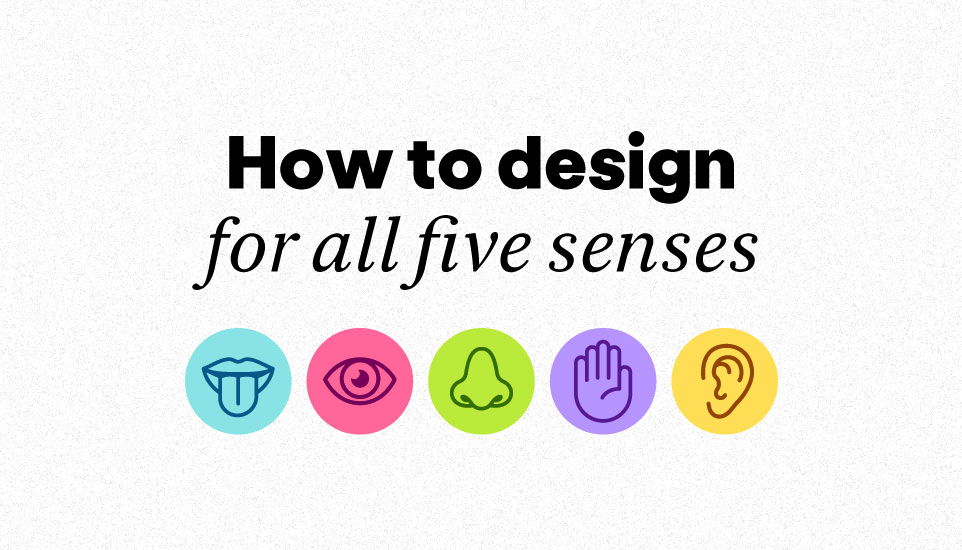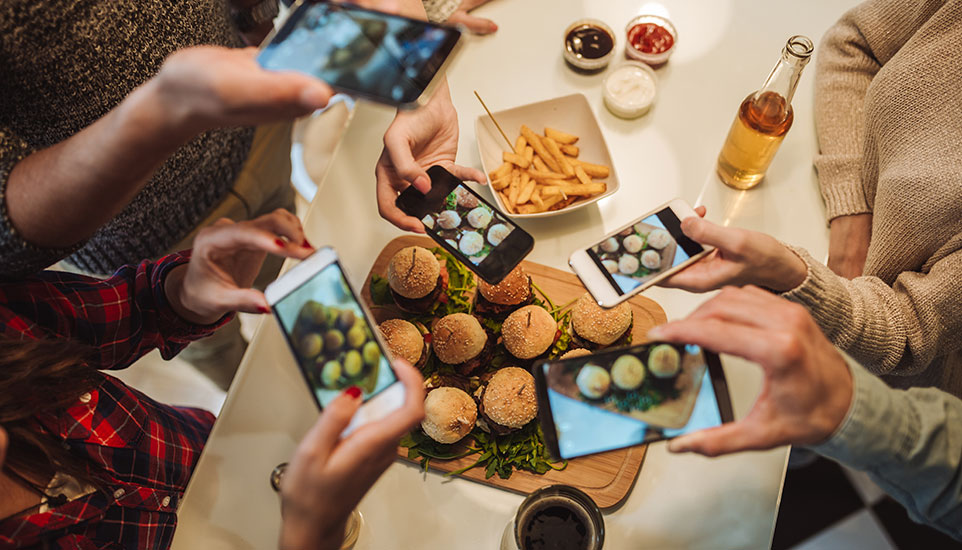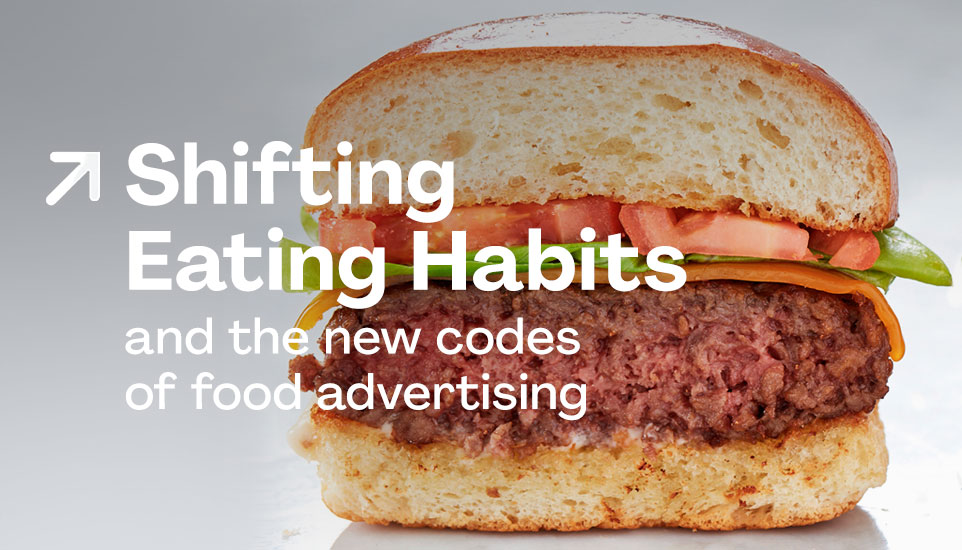Opinion Piece
How to design for all five senses – A sense by sense guide to sensory branding

In today’s market, where competition is fierce and products /services have become more of the same, what truly differentiates a star brand from a struggling one?
“Many things”, one might say, with visually appealing branding & content most definitely making it somewhere near the top of the list. But beyond esthetics? What about the remaining 4 senses? How do we involve them to seal the emotional connection which is crucial to build a long-lasting relationship with our audience?
Engaging more or all sensory preceptors during the branding exercise is known as sensory branding. And it’s what our most cherished brand experiences are made of. Some matches are obvious, like perfumes and the sense of smell or restaurants targeting the sense of taste. Others are more subtle, yet go a long way in helping a brand leave its mark, with these associations becoming part of its DNA.
All five senses are considered when developing your brand strategy and guidelines. Making sensory associations from the get-go thus allows our team to integrate them to designs and interactions whenever the time’s right to optimize the brand experience, no matter the touch-point or medium.
Now let’s go on discovering how our 5 senses impact the way we interact with certain products, ads, and content and how brands can leverage the specific characteristics of each to forge meaningful bonds with customers and prospects alike.
A sense by sense guide to sensory branding
- Smell: The sense of smell is closely linked to emotions and memory. Major brands have thus made it a habit of associating their premises with signature fragrances. It works for anyone across the board: from luxury stores to malls and airports, bakeries and diners too – the aeration systems aren’t placed near ovens by chance: the wafting scent of food is a direct invitation to taste that freshly baked bread. We can also replicate the idea of an enticing aroma online for clients such as Barista coffee through the steam that comes out of a cup, the visual element linking back to the sense of smell
Quick tip: Stay subtle when incorporating aromas to your branding efforts. While studies show that appealing fragrances can improve mood by 40 percent, make sure it is not overwhelming as it can repulse your audience.
- Sound: Audio marketing has been a part of advertising ever since radio spots have been around, whether via a jingle, a slogan that entire generations can’t seem to get out of their head or a thematic song that becomes synonymous with the brand. Think Pepsi and their “We will Rock You” ads or Nutella and Glorious – and now you’re singing it, aren’t you?!
Quick tip: Don’t underestimate the importance of sound in your in-store experience. A study conducted by Mood Media found that the music played inside a shop has an overall positive impact on 85% of global shoppers.
- Touch: Our skin is our largest organ. So it comes as no surprise that touch plays an important part in the way we interact with people, things, and the world at large – including brands. And trust us, there’s almost always a way for your brand to capitalize on texture. This applies to both the products you’re selling and the packages they come in: from the latest smartphone to your box of favorite fries! No wonder our designers spent days deciding on the best paper that would handle printing, maintain heat and feel oh so fancy during the brand identity creation of Origami.
Quick tip: Beyond boxes, think of buyers’ journeys in domains such as the tech, fashion and automotive industries or furniture design where hands-on experiences play a crucial part in purchasing decisions.
- Sight: As our main gateway to perceive and interact with the world, sight is obviously the most powerful sense in advertising, even more so in the digital world, where smell, touch, and taste are – up until today – incapacitated. It’s also the easiest sense to please once you have an idea of the art and science behind it.
- Color is a key component of sight, and many brands have capitalized on their very own shades. We’re looking at you, Tiffany Blue and Ferrari Rosso Corsa. Also, colors trigger certain emotions, so it is crucial to choose the ones that work best with your brand.
- High quality images of your product help people understand what they’re getting their hands on, and shots of other people using it tap into their interest in others. Images also include graphics: illustrations, infographics, diagrams, and computer-generated visuals.
- Texts and written words are also part of how brands catch someone’s eye. Picking the right fonts for your ads? Sure. Also that sign placed above your shop’s entrance and that witty tone of voice that just spoke to your soul.
- Light is a more subtle way of tackling visual marketing. However, it can virtually transform the look and feel of your space and drastically change the customer experience.
Quick tip: Make sure your brand offers a seamless visual experience across the buyer’s journey. A good example would be Levanthyme’s identity that spans across the website, restaurant premises, delivery experience, and social media platforms. Check it out here
- Taste: The sense of taste is one of the most visceral, since it is linked to our biological need to eat and drink. However, it’s hard to tame, which is why it’s rarely featured in brands marketing efforts. But taste does work wonders when combined with other senses, think:
- The sight of melting chocolate oozing out of a cake on your Instagram feed
- The crunching sound of potato chips in a TV ad
- The grainy feel of that craft bag keeping your lunch order warm
- The aroma of freshly brewed coffee that hits you when you enter your favorite cafe
All of these have been carefully thought of and designed to trigger your senses by some of the best creative brains in the branding & marketing industry.
Quick tip: Sometimes a communication campaign can be designed to mirror the product’s taste! That’s exactly what we did for the Mirinda Plus launch in Egypt. Our team worked on associating graphical elements, sounds, colors, and a certain upbeat mood to convey the tangy, sparkly and citrusy flavors of the product. Check it out here
Sight, sound, smell, touch and taste all play a part in how we perceive and interact with the world. They also influence our purchasing decisions. Incorporating and combining most or all five senses in your branding efforts is thus one sure way to innovate and enrich your customers’ brand experience.



